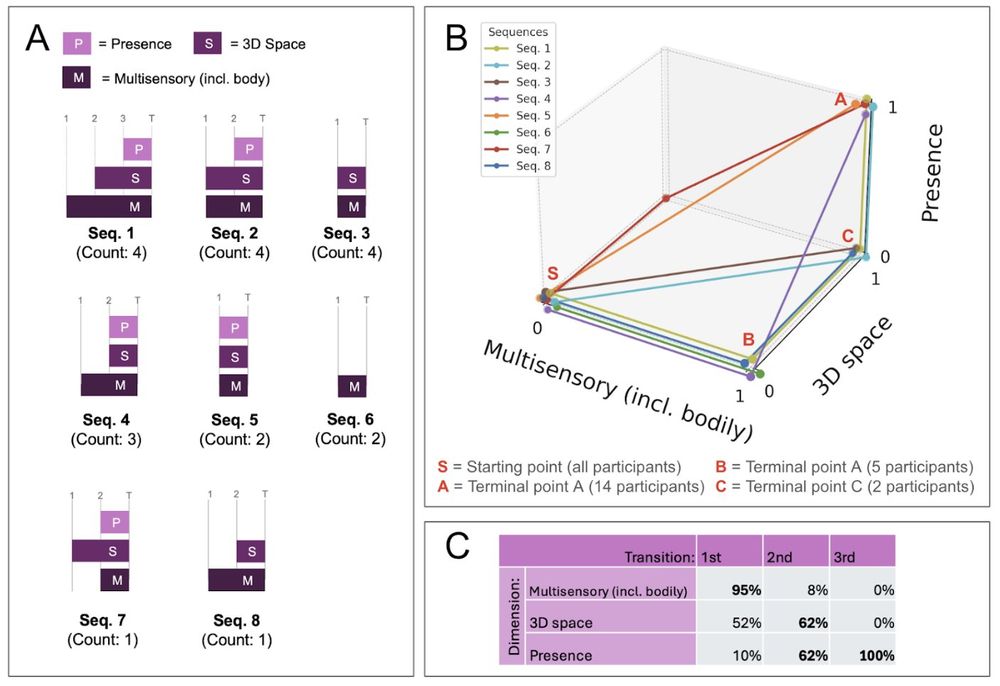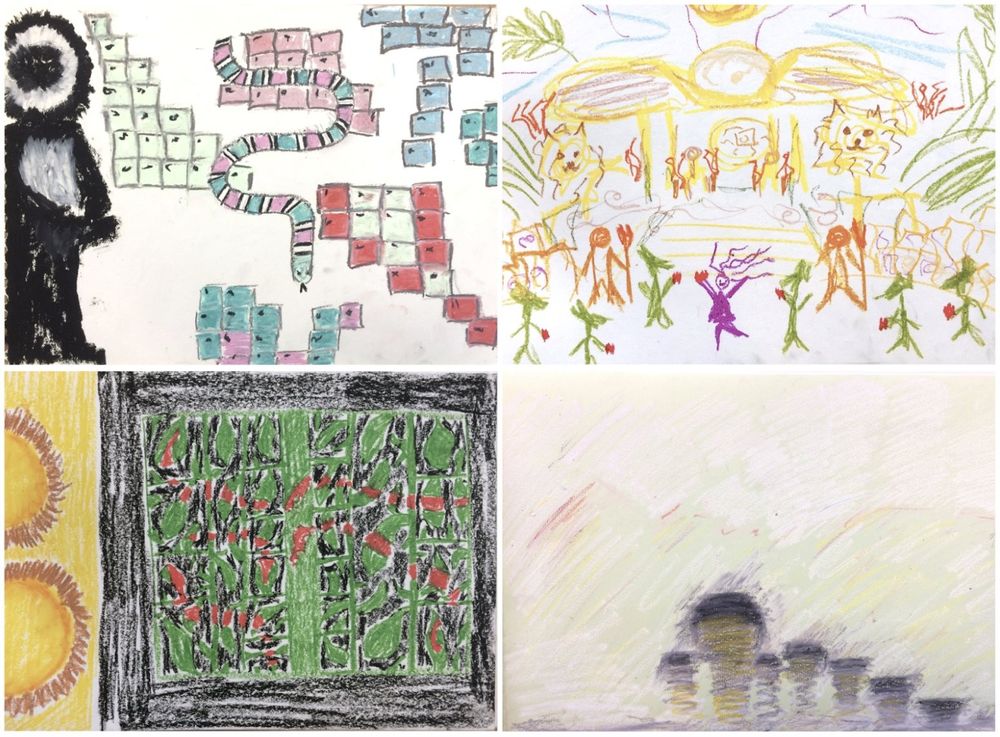Image: 17th century visionary depictions of the Dzogchen practice Tögal, in Tibet's Lukhang Monastery. (Source: Wellcome Trust)
01.10.2025 16:05 — 👍 0 🔁 0 💬 0 📌 0
Finally, I'm very grateful to the team at Imperial College London's Centre for Psychedelic Research, and especially David Erritzoe, for their support over the last few years. An awesome team, who I am pleased to continue working with as an honorary research associate.
01.10.2025 16:05 — 👍 0 🔁 0 💬 1 📌 0
I'm very grateful to UCL, + my supervisors Jeremy Skipper & Chris Timmermann @christimmermann.bsky.social. I'm also very grateful to David Germano (& the University of Virginia), Claire Petitmengin, & Martijn van Beek, for making this historic meeting of micro-phenomenology & Dzogchen a reality
01.10.2025 16:05 — 👍 1 🔁 0 💬 1 📌 0
There will naturally be a substantial focus on the micro-phenomenological method, & deep-dives into similarities / differences between these advanced meditation states & those induced by N,N-DMT and 5-MeO-DMT, and more.
01.10.2025 16:05 — 👍 0 🔁 0 💬 1 📌 0

"Lukhang mural 3" by Wellcome Trust, wellcomecollection.org Ian Baker, Hamid Sardar, Hon Wai Wai is licensed under CC BY 4.0.
Today I start my PhD studies at UCL's Centre for Consciousness Research! @uccr.bsky.social Here I will work with advanced practitioners of Dzogchen ('Great Perfection'; a Tibetan contemplative tradition), to neurophenomenologically assess the landscapes of conscious experience these practices unlock
01.10.2025 16:05 — 👍 1 🔁 0 💬 2 📌 0
OSF
13/
I’m grateful to my coauthors @raphaelmilliere.com Ema Demšar, Zach Daily @robincarhartharris.bsky.social & especially @christimmermann.bsky.social for his great trust & patience. Huge gratitude for the support & mentorship of Claire Petitmengin too
Full paper here: osf.io/preprints/ps...
/end.
15.05.2025 19:23 — 👍 3 🔁 0 💬 0 📌 0
12/
Next for us is to explore how the phenomenological structures identified here relate to brain dynamics observed in the concurrently measured fMRI/EEG data - a truly exciting undertaking!
15.05.2025 19:23 — 👍 1 🔁 0 💬 1 📌 0
11/
Terrence McKenna said that the chance of the scientific mindset surviving the DMT realm is like the chance of an ice cube surviving a blast furnace. We demonstrate here, to the contrary, that even the most complex & personal experiences can have shared, observable structures
15.05.2025 19:23 — 👍 1 🔁 0 💬 1 📌 0
10/
This study demonstrates the potential of psychedelic micro-phenomenology to create detailed & precise descriptions with a structural focus, ideal for neurophenomenology & for comparing qualities of immersion & perceived presences across various non-ordinary/disordered states
15.05.2025 19:23 — 👍 1 🔁 0 💬 1 📌 0
9/
Immersion and presence phenomena are important to the cognitive neuroscience of consciousness, as they lay bare the mind’s capacity to construct richly structured experiential worlds, with intricate perceptual and social features
15.05.2025 19:23 — 👍 1 🔁 0 💬 1 📌 0

8/
Importantly, dynamic analysis showed these experiences didn’t develop randomly. A hierarchical pattern emerged: bodily effects tended to emerge first, followed by the integration of visual & auditory effects, then 3D space emerged, with perceived presences typically last
15.05.2025 19:23 — 👍 1 🔁 0 💬 1 📌 0

7/
These participant illustrations highlight the dimension of semantic complexity, whereby some perceived presences took the form of complex & specific figures, while others took the form of relatively simple & abstract shapes
15.05.2025 19:23 — 👍 1 🔁 0 💬 1 📌 0
6/
Perceived presences were common, and variable on a range of dimensions: in some cases seen as figures located in a particular environment, and in others purely felt and diffuse; in some cases socially engaged with the perceiving subject, while in other cases socially detached
15.05.2025 19:23 — 👍 1 🔁 0 💬 1 📌 0
5/
A wide range of cognitive faculties are implicated, including perception through the modal senses, amodal feelings (such as felt meaning and felt space), and a wide variety of self/world and social configurations.
15.05.2025 19:23 — 👍 1 🔁 0 💬 1 📌 0
4/
Our results show that immersion under psychedelics is a complex, structural phenomenon through which an emergent landscape of experience envelops and involves the perceiving subject.
15.05.2025 19:23 — 👍 2 🔁 0 💬 1 📌 0
3/
We gave 25 participants IV DMT during combined fMRI/EEG
We then used micro-phenomenological interviews to elicit rich & systematic descriptions of immersion and perceived presences under DMT, going beyond traditional summary reports to specify how it all unfolded across time
15.05.2025 19:23 — 👍 1 🔁 0 💬 1 📌 0
2/
We know from prev research that DMT reliably induces immersive experiences of other worlds, as well as perceived presence encounters (aka entities). But the structure & temporal dynamics of these phenomena are typically obscured in research, by limited phenomenological methods
15.05.2025 19:23 — 👍 1 🔁 0 💬 1 📌 0

1/
How can micro-phenomenology advance our knowledge of the mind/brain under DMT, and address methodological shortcomings in psychedelic phenomenology more broadly?
Announcing a new preprint from the DMT Research Group @ the Imperial College London Centre for Psychedelic Research
15.05.2025 19:23 — 👍 6 🔁 2 💬 1 📌 0

Our new paper - the first peer-reviewed brain and phenomenological examination of 5-MeO-DMT is out in Neuro of Consciousness.
TLDR: We tested whether ‘the mount Everest’ of psychedelics could induce a complete state of consciousness deconstruction while preserving awareness. 1/n
#neuroskyence
23.04.2025 14:06 — 👍 36 🔁 12 💬 3 📌 1
Clinical Psychology Postdoc at the MRC Cognition and Brain Sciences Unit, University of Cambridge. Studying empathy, mental health, and transdiagnostic characteristics of psychopathology. #rstats enthusiast. Curious about most things 😊
The UCCR is an interdisciplinary centre advancing the scientific study of consciousness, with a focus on altered and non-ordinary states.
https://www.uccr.uk/
🥼🪷🍄🧘♀️
LIDO DTP PhD student at UCL; Child Vision Lab & UNITy project
Vision, perception, hallucinations, mental imagery, development 🧠
I’m a philosopher with a PhD in Psychobiology, writing a blog with phenomenological descriptions of perceptual, cognitive, and affective experiences: https://phenomenologicaldescriptions.blogspot.com/
Neuroscientist working on the neurophenomenology of psychedelics, breathwork & meditation | PhD at University of Cambridge
Professor Vrije Universiteit Amsterdam, Director Institute Brain and Behavior Amsterdam, human brain and mind, attention, predictive processing, action, consciousness, meditation
www.heleenslagter.com
I am currently an INSERM Director of Research at Lyon Neuroscience Research Center, Inserm U1028 and the co-leader of the Experiential Neuroscience and Mental Training team (Eduwell)
Physicist and mathematician working on consciousness. Based at Munich Center for Mathematical Philosophy, LMU Graduate School of Systemic Neurosciences, and University of Bamberg's Institute for Psychology. https://jkleiner.de/
We study the neurobiology of language and its relationship to consciousness, mental health, and wellbeing using neuroimaging and psychedelics at UCL 🧠 🗣️
http://www.lab-lab.org/
UCL Centre for Consciousness Research
https://www.uccr.uk/
Emergence, synergy, brains, AI safety, mental health
Psychedelic Researcher | Peace Activist | Abu-Emanu
Senior Lecturer at the University of Exeter (ex-Imperialist)
Teaching at MSc Psychedelics: Mind, Medicine and Culture
Co-founder of RIPPLES
Member of Ripples Collective
Neuroscience and Science Diplomacy
Psychedelic sciences critical thinking
Associate Researcher at ULisbon 🇵🇹 Affiliated Researcher at Petrie-Flom Center, Harvard U. 🇺🇸
Honorary Researcher at LAB lab, UCL 🇬🇧
www.eduardoschenberg.com
Cognitive Psychology PhD Candidate | Head of Viscereality Project |
Coordinator of the ALIUS research network @aliusresearch.bsky.social
The Center for Psychedelic and Consciousness Research studies how psychedelics affect behavior, mood, cognition, brain function, & biological markers of health.
hopkinspsychedelic.org
UCL (neuro)scientists using neuroimaging, pharmacological interventions (5-MeO-DMT, DMT, LSD, and psilocybin), and other methods within the 'Understanding Neuroplasticity Induced by Tryptamines' or UNITy Project | 🧠🍄🌈
https://www.psychedelicunit.com/
Associate Professor and Director of the Meditation Research Program at Harvard Medical School / Mass General (MGH)
https://meditation.mgh.harvard.edu/
https://scholar.google.com/citations?user=ckejHQkAAAAJ&hl=en




